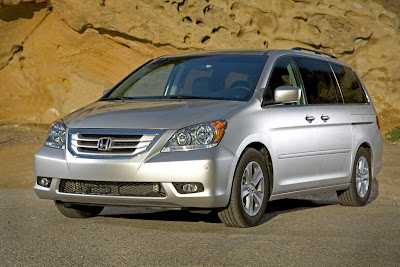
The 2010 Honda Odyssey continues to stand apart from the minivan crowd with a reputation built on innovation, quality and engineering excellence. The Odyssey’s alignment of features like an engaging-to-drive character, a 3rd-Row Magic Seat®, a premium appearance and efficient engine performance combine to offer a sophisticated transportation environment with room for up to eight people (seven on LX models). The available 244-horsepower V-6 engine achieves an EPA highway fuel-economy rating1 of 25 miles per gallon (mpg) on models equipped with Variable Cylinder Management™ (VCM®), a system that can deactivate up to half of the engine’s cylinders when less power is needed. Available premium features include a leather-trimmed interior, Honda Satellite-linked Navigation System, DVD rear entertainment system, Bluetooth® HandsFreeLink™, a backup camera, power side-doors, power tailgate and much more.
“A minivan is tough to beat when it comes to carting your kids around or to moving the maximum number of people in maximum comfort and efficiency,” said Vicki Poponi, assistant vice president of Product Planning for American Honda Motor Co., Inc. “Beyond the superior functionality inherent to a minivan, the Odyssey offers customers convenient seating versatility, a high-quality feel and a reputation for surprisingly engaging driving dynamics.”
With its One-Motion 60/40 Split 3rd-Row Magic Seat®, the Odyssey’s seating areas can quickly and easily adapt between passenger and cargo duties. The 3rd-Row Magic Seat can accommodate up to three passengers and still provide 38.4 cu-ft. of cargo volume behind the seats, or fold completely flat into the floor to create 91.1 cu-ft. of cargo volume while still maintaining room for five passengers (four passengers on LX). With the second-row seats removed, total cargo volume expands to 147.4 cu-ft. Total interior volume measures 209.8 cu-ft. for passenger and cargo volume combined. The unique 2nd-Row PlusOne Seat™ on the Odyssey EX, EX-L and Touring integrates a storage bin inside the seat structure and is also removable to create a walk-through to the third row.
The Odyssey achieves the highest crash safety rating from the National Highway Traffic Safety Administration, five stars, for both frontal and side impacts2.
All Odyssey models are equipped with Vehicle Stability Assist™ (VSA®), commonly referenced as electronic stability control; standard anti-lock brakes with electronic brake distribution and Brake Assist; advanced dual-stage, dual-threshold driver’s and front passenger’s SRS front airbags; front side airbags with passenger-side Occupant Position Detection System (OPDS); three-row side-curtain airbags with a rollover sensor; active front seat head restraints; daytime running lights and a pedestrian injury mitigation design in the front of the vehicle. An Advanced Compatibility Engineering™ (ACE™) body structure provides enhanced occupant protection in a frontal collision.
Designed with families in mind, a total of three Lower Anchors and Tethers for CHildren (LATCH) child seat attachment systems are available. Two are located in the outboard second-row seating positions and one is located in the middle third-row seating position.
The 3.5-liter, all-aluminum, SOHC VTEC® engine on the Odyssey LX and EX produces 244 horsepower at 5,750 rpm and 240 lb-ft. of torque at 5,000 rpm. The Odyssey LX and EX models achieve an EPA-rated city/highway fuel economy of 16/23 mpg1 . A 5-speed automatic transmission is standard equipment.
The Odyssey EX-L and Touring models feature a 3.5-liter, all-aluminum, SOHC i-VTEC® V-6 engine with VCM for enhanced fuel efficiency. This engine produces 244 horsepower at 5,700 rpm and 245 lb-ft. of torque at 4,900 rpm while achieving an EPA-rated city/highway fuel economy of 17/25 mpg1 . This VCM engine is programmed to run on 3, 4 or 6 cylinders, based on current power requirements. Powered by the intelligence of i-VTEC technology, VCM quickly and seamlessly activates or deactivates 2 or 3 cylinders by closing each cylinder’s intake and exhaust valves at the same time. The system provides V-6 power when accelerating or climbing, as well as the fuel efficiency of a smaller engine while cruising.
An independent front and rear suspension and a rigid unit-body structure help provide comfortable and refined handling performance. Additional chassis components include power-assisted 4-wheel disc brakes and variable power-assisted rack-and-pinion steering. Odyssey LX, EX and EX-L models have 16-inch wheels (alloy on EX and above) with all-season 235/65R16 tires. Odyssey Touring models are equipped with 17-inch alloy wheels and all-season 235/60R17 tires.
The Odyssey is available in four model choices (LX, EX, EX-L and Touring). Standard comfort and convenience features on the Odyssey LX include a front and rear air conditioning system with an air-filtration system, keyless entry, tilt and telescopic steering column, cruise control, power windows with auto-up/down driver’s and passenger’s window, power door and tailgate locks, AM/FM/CD stereo system with 4-speakers and auxiliary audio input jack, heat-rejecting glass and more.
The Odyssey EX adds a tri-zone automatic climate control system, an 8-way power driver’s seat with lumbar support, power sliding doors, 2nd-Row PlusOne Seat™ with storage bin, 6-disc in-dash CD changer with 6-speakers, security system, body colored side mirrors and door handles, alloy wheels, roof rails, auto-off headlights, fog lights, exterior temperature indicator, HomeLink® remote system and more. Newly available on the Odyssey EX for 2010 is the Honda DVD Rear Entertainment System with 9-inch screen, which also adds a 115-volt power outlet.
The Odyssey EX-L adds leather-trimmed seating surfaces, heated front seats, power tailgate, 4-way power front-passenger’s seat, XM Radio®3, power moonroof, automatic-dimming rearview mirror with a 2.5-inch rearview camera display (EX-L-exclusive). Available on the Odyssey EX-L is the Honda DVD Rear Entertainment System with 9-inch screen, which also adds a 115-volt power outlet. Available on the Odyssey EX-L equipped with the DVD rear entertainment system is the Honda Satellite-linked Navigation System with voice recognition and rearview camera (navi screen rearview camera display replaces rearview mirror display). Navigation-equipped models also include Bluetooth HandsFreeLink.
The Odyssey Touring includes all of the features from the Odyssey EX-L with the DVD rear entertainment system and the Honda Satellite-linked Navigation System as standard equipment plus the Premium Audio System with 7-speakers including subwoofer, a programmable multi-information display with trip computer, a two-position memory power driver’s seat, power adjustable pedals, premium alloy wheels, corner and backup sensors, auto on/off headlights and a compass.
The Odyssey has won numerous awards and critical acclaim including the Kelley Blue Book award as one of the 10 “Best New Family Vehicles of 2009,” and “2009 Best Resale Value Award” in the van category, which honors vehicles that are expected to have the best resale value after five years of ownership.
Colors for 2010 include Alabaster Silver (replaces Silver Pearl Metallic), Crystal Black Pearl (replaces Nighthawk Black Pearl), Polished Metal Metallic (replaces Sterling Gray Metallic), Slate Green Metallic, Bali Blue Pearl, Dark Cherry Pearl, Ocean Mist Metallic, Mocha Beige Metallic and Taffeta White. Interior color choices, determined by exterior color, include ivory, olive, black or gray.
The Odyssey is produced from domestic and globally sourced parts by Honda Manufacturing of Alabama, LLC in Lincoln, Alabama.
2010 Honda Odyssey Basic Specs:Engine: 3.5-liter VTEC V-6 (LX, EX), 3.5-liter i-VTEC V-6 (EX-L, Touring)
Horsepower: 244-hp@5,750 rpm (LX, EX), 244-hp@5,700 rpm (EX-L, Touring)
Torque: 240 lb-ft.@5,000 rpm (LX, EX), 245 lb-ft @ 4900 rpm (EX-L, Touring)
EPA-estimated Fuel Economy, City/Hwy/Comb.: 16/23/18 (LX, EX), 17/25/20 (EX-L, Touring)
Seating Capacity: 7(LX), 8 (EX, EX-L, Touring)
Passenger Volume: 171.4 cu-ft. (LX, EX), 168.3 cu-ft. (EX-L, Touring)
Cargo Volume: 34.7 cu-ft.
Towing Capacity: 3,500 lbs.4
Standard Airbags: Driver’s and Front-Passenger’s Dual-stage, Dual-Threshold Front Airbags; Front-side airbags with passenger-side Occupant Position Detection System (OPDS); and Side-curtain Airbags with Rollover Sensor
Standard Electronic Stability Control (ESC): Vehicle Stability Assist™ (VSA®)
Standard Anti-lock Braking System: 4-channel with Brake Assist
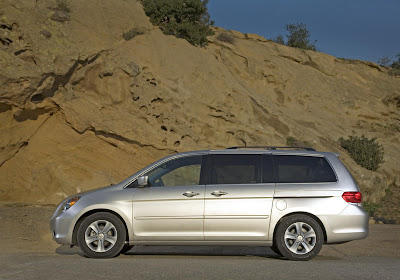
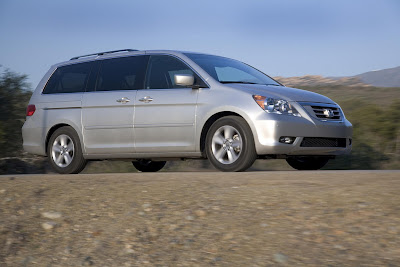


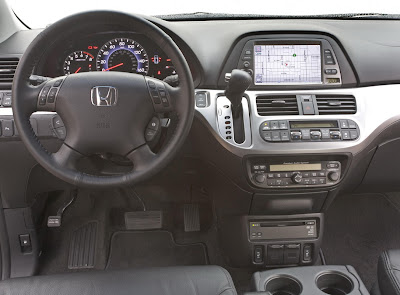
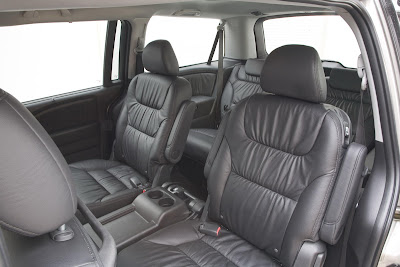






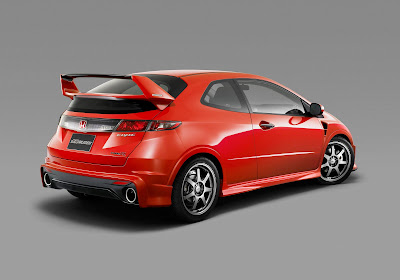
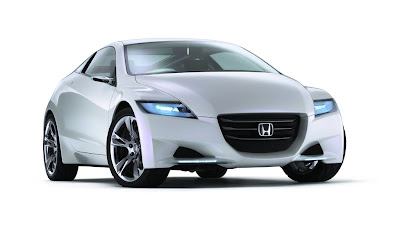
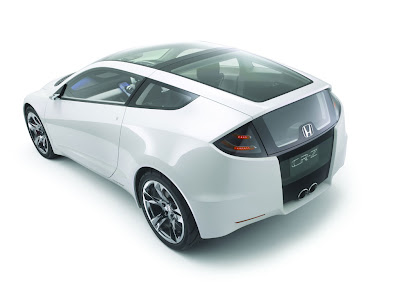
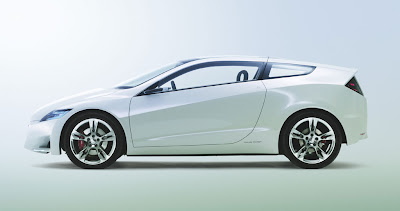








 The new 2010 2010 Honda Odyssey is also comfortable to drive, the driver's seat on the this model comes standard with an 8-way power seat adjustment, and the Honda Odyssey LX model has manual height adjustment for the driver's seat. Also meeting stringent Low Emission Vehicle standards. The front and rear air-conditioning is standard on both new Honda van models, the EX models include an automatic climate control system. Upon introduction, both trims are equipped with a standard 3.5-liter, V6, 240-horsepower engine that achieves 18-mpg in the city and 25-mpg on the highway. A 5-speed automatic transmission with overdrive is standard. The 2010 2010 Odyssey is a carryover from 2003.
The new 2010 2010 Honda Odyssey is also comfortable to drive, the driver's seat on the this model comes standard with an 8-way power seat adjustment, and the Honda Odyssey LX model has manual height adjustment for the driver's seat. Also meeting stringent Low Emission Vehicle standards. The front and rear air-conditioning is standard on both new Honda van models, the EX models include an automatic climate control system. Upon introduction, both trims are equipped with a standard 3.5-liter, V6, 240-horsepower engine that achieves 18-mpg in the city and 25-mpg on the highway. A 5-speed automatic transmission with overdrive is standard. The 2010 2010 Odyssey is a carryover from 2003.